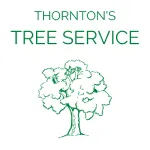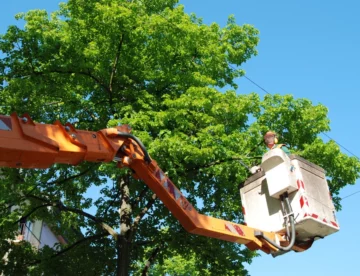
Can You Cut Tree Limbs or Prune in the Summer?
After summer arrives in West Texas, many homeowners wonder: Is it okay to trim or prune trees in the heat of the season. Well, the short answer is yes – but with care and expertise. A
t Thornton’s Tree Service in Abilene, TX, we have the right equipment – including manlifts and cranes – and the professional knowledge to safely prune trees year-round, including during the summer months.
When Is Summer Pruning Appropriate?
While late winter or early spring is generally the best time to prune most trees, summer pruning can be beneficial and even necessary in certain situations:
- Removing storm-damaged limbs
- Correcting structural issues (crossed or rubbing branches)
- Clearing limbs away from roofs, power lines, or walkways
- Improving tree shape or visibility
- Reducing risk of falling limbs in high-traffic areas
Pruning in the summer can help reduce weight from heavy limbs and prevent future breakage – especially important when Abilene faces summer storms or high winds.
What to Avoid When Pruning in Summer
Some types of pruning can stress a tree if done improperly in the heat. Over-pruning or removing too much canopy can expose the tree to sunscald or reduce its ability to produce food through photosynthesis.
That’s why it’s important to work with professionals like Thornton’s Tree Service. Our team knows how to evaluate the health and type of each tree to determine:
- Which limbs can safely be removed
- How much to trim without harming the tree
- When to avoid cutting altogether
How Our Equipment Makes a Difference
Some tree limbs are simply too high or too dangerous to reach with ladders or basic tools. That’s where our manlifts and cranes come in. With our specialized equipment, we can:
- Reach tall limbs safely and efficiently
- Prune hard-to-access trees with minimal impact to your property
- Complete jobs quickly and cleanly and safely, even in the hottest months
Our crews are trained, insured, and experienced in operating this heavy-duty equipment, so you don’t have to risk your safety trying to do it yourself.
Serving Abilene and the Big Country, West Texas and Central Texas
Whether you need emergency limb removal after a storm, routine trimming for tree health, or large-scale pruning to protect your home or business, Thornton’s Tree Service is ready to help. We serve Abilene, TX, and serve customers in a 100 mile surrounding area, offering fast, friendly, and professional service all summer long.
Need Tree Work This Summer? Give Us a Call. Free estimates available. At Thornton’s Tree Service, we’re all about giving you the best deal and the best care.
If you find a lower quote from another reputable, trusted tree service, just show us – we’ll beat it!
We believe everyone deserves top-quality tree care at a price that works for them.
Let us do the hard (and high) work for you – Thornton’s Tree Service has the equipment, skill, and experience to get it done right.
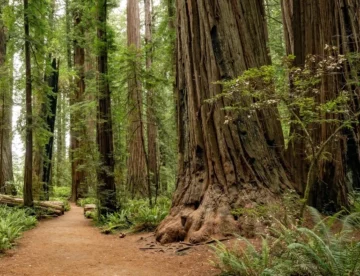
At Thornton’s Tree Service, we spend a lot of time among the beautiful trees of Abilene, Texas, but even we stand in awe of the tallest tree in the United States – Hyperion.
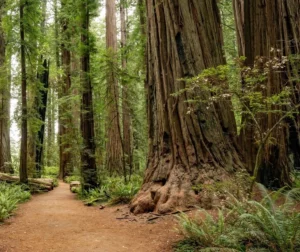
Discovered in 2006 in a remote part of Redwood National Park in California, Hyperion is a coast redwood (Sequoia sempervirens) that towers an astonishing 379.7 feet high. That’s taller than the Statue of Liberty and a breathtaking example of what nature can achieve.
These giant redwoods are not just tall; they’re ancient. Hyperion is estimated to be between 600 and 800 years old, having survived countless storms, fires, and centuries of change. Coast redwoods like Hyperion grow so tall partly because of the ideal climate along California’s northern coast: foggy, mild, and damp – perfect for these forest behemoths to reach skyward.
Tallest Trees in Texas
You might be wondering: what’s the tallest tree in Texas? While we don’t have redwoods here in Abilene, nor will you ever find the tallest tree in Texas here, but the Lone Star State does boast some impressive tall trees of its own!
Down in Huntsville:
🌳 The Sam Houston Oak in Huntsville stands tall at 103 feet and it’s estimated to be over 200 years old. It’s one of the most famous live oaks in the state and is steeped in Texas history.
Over in the Piney Woods of East Texas around Tyler:
🌳 In the East Texas forests, loblolly pines (Pinus taeda) can reach heights of 100 to 120 feet and thrive in the rich, acidic soils of the Piney Woods region.
🌳 Another champion is the Bald Cypress (Taxodium distichum), known for its towering height and iconic flared trunk base. Some of the tallest bald cypress trees in east Texas can reach over 120 feet and live for thousands of years in swampy areas along rivers and bayous (which you won’t find in west Texas, think east and southeast parts of the state).
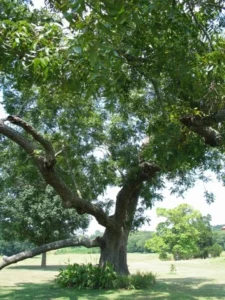
In Central Texas around Goldthwaite and south:
🌳 In the Central Texas region, pecan trees (Carya illinoinensis) are also tall contenders, with some specimens reaching 100 feet or more in optimal conditions. Pecans are native to around 150 counties in Texas. It’s also our state tree.
Your Local Tree Experts
At Thornton’s Tree Service, we love learning about these giants – whether they’re towering redwoods in California or our own Texas natives.
While we’re definitely not working with redwoods here in the Abilene area, we’re experts at caring for the trees in your yard. And our cranes come in really handy for remove our larger trees and trees that are located in a difficult spot.
Whether it’s trimming, removal, or stump grinding, we’re here to help keep your trees healthy and strong – so they can keep reaching for the sky, just like Hyperion.
If you need expert help getting your tallest tree trimmed or removed, give Thornton’s a call as we’re here to keep your property safe, beautiful, and strong.

As May roll along, temperatures are already starting to rise – and your trees are feeling it. With the summer heat arriving early, now is the perfect time to give your trees the care they need to stay healthy all season long. At Thornton’s Tree Service, we’ve put together a few essential tips for protecting your trees during these hot, dry months.
1. Water Deeply and Early
High temperatures mean more water evaporates before it reaches the roots. Water early in the morning and make sure to soak the soil deeply, especially for young or newly planted trees.
2. Mulch for Moisture
Adding a 2-inch to 4-inch layer of mulch around your tree (but not touching the trunk, REPEAT: DO NOT TOUCH THE TRUNK WITH THE MULCH) helps retain soil moisture and regulate root temperature. Mulch also reduces weed competition and soil erosion. Download a great USDA article on mulching here.
3. Prune with Purpose
If you didn’t prune in late winter, now’s the time to remove any dead or damaged limbs. Proper pruning improves airflow and reduces the risk of storm damage or insect infestations. Thornton’s Tree Service is ready to help with the pruning, call today and we’ll come out on site and provide a quote.
4. Watch for Heat Stress
Wilting leaves, early leaf drop, and scorched edges are signs to watch for as we head into summer if we don’t get any more significant spring rains. These are signs your tree may be struggling in the summer heat. Consistent care and proper watering can prevent long-term damage.
5. Schedule a Tree Health Check
May is a great month for a professional tree assessment. Our certified arborist can spot early signs of disease, pest problems, or stress before they become serious.
Protecting your trees now helps them thrive through the summer heat and beyond. If you need expert help, give Thornton’s a call as we’re here to keep your landscape safe, beautiful, and strong.

Here at Thornton’s Tree Service we’re thrilled to join our fellow Abilenians in celebrating a significant achievement: Abilene has been named one of Livability’s Top 100 Best Places to Live in the U.S. for 2024–2025!
This recognition highlights what residents have long known—our city offers a unique blend of small-town charm and big-city amenities, making it a wonderful place to live, work, and play. (Abilene is One of the Best Cities to Live in Texas / Abilene Regional Growth Alliance)

Why Abilene Stands Out
According to Livability, Abilene’s appeal lies in its affordable housing, friendly neighborhoods, and a relaxed pace of life without sacrificing excellent amenities and top-notch quality of life. The city boasts a vibrant arts scene, diverse culinary offerings, and numerous outdoor activities, including hiking, kayaking, and stargazing at Abilene State Park. Families appreciate attractions like the Abilene Zoo and the National Center for Children’s Illustrated Literature, reinforcing our city’s reputation as the “Storybook Capital of America.” (Moving to Abilene, TX – Best Place to Live in the U.S. 2024-2025)
A Community Rooted in Growth
Abilene’s recognition is a testament to its community spirit and strategic investments in economic development. The city’s diverse economy, with strong sectors in healthcare, education, and manufacturing, provides ample opportunities for residents. As Doug Peters, President & CEO of the Abilene Chamber of Commerce, aptly stated, “If you’re lucky enough to live in Abilene, Texas – you’re lucky enough.” (Moving to Abilene, TX – Best Place to Live in the U.S. 2024-2025, Abilene is One of the Best Cities to Live in Texas / Abilene Chamber of Commerce)
Our Commitment to Abilene’s Natural Beauty
As a local tree service company, we take pride in contributing to Abilene’s natural beauty and livability. Our work ensures that the city’s green spaces remain healthy and vibrant, enhancing the quality of life for all residents. We are honored to serve a community that values both progress and preservation. (Abilene named one of the top 10 best cities for retirees)
Looking Ahead
Abilene’s inclusion in Livability’s Top 100 list is more than an accolade; it’s a reflection of our city’s enduring appeal and the collective efforts of its residents. We look forward to continuing our role in maintaining and enhancing the natural environment that makes Abilene a top place to live.
Congratulations, Abilene! Here’s to our city’s continued growth and prosperity.
For more information on Abilene’s recognition, check out Livability’s profile on Abilene.
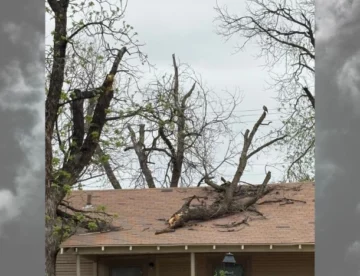
Spring Storms in Abilene: Is Your Yard Ready?
What a spring already! High winds, dust storms, rain, thunderstorms, even tornadoes—and that’s just the past few weeks!
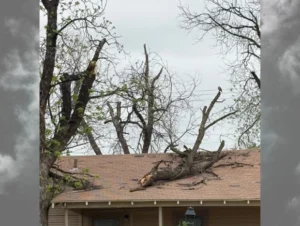
Here in Abilene and across West Texas, spring brings a mix of beauty and chaos. While we all enjoy the warmer temps and blooming landscapes, those powerful spring storms can do real damage—especially if your trees aren’t ready.
At Thornton’s Tree Service, we’re here to help you stay ahead of the storm.
Precautionary tree trimming is one of the best ways to protect your home and property. By removing weak limbs, thinning thick canopies, and catching potential hazards early, we reduce the risk of falling branches and storm damage before the weather takes a turn.
And if the storm’s already rolled through?
Don’t worry – we’ve got you covered with fast, reliable storm cleanup 24/7/365. From clearing debris to checking tree health, our crew is ready to help you clean up and move forward safely.
Spring weather in Abilene can be unpredictable, but your tree care doesn’t have to be. Call Thornton’s Tree Service today for pre-storm trimming or post-storm cleanup – and let us help you weather the season with confidence.
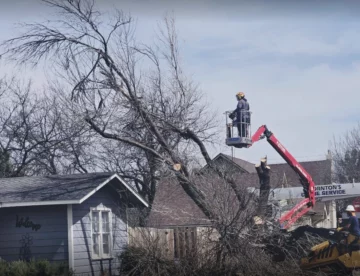
Strong winds can turn weak or overgrown branches into dangerous projectiles, causing damage to homes, vehicles, and power lines. Dead, diseased, or structurally weak limbs are especially vulnerable to breaking under the pressure of heavy winds. Regular trimming helps eliminate these risks and ensures your trees remain strong and resilient during storms.
Prevent Property Damage
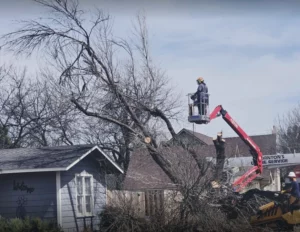
A single falling branch can cause thousands of dollars in damage to roofs, windows, fences, or vehicles here in Texas. In some cases, an entire tree may uproot if it’s top-heavy due to unbalanced growth. Trimming by a professional tree service firm helps distribute weight more evenly, reducing the likelihood of a tree toppling over and causing significant destruction. You can get peace of mind that your property is safer.
An example here work that we did for a client AFTER the March 14th, 2025 wind storm in Abilene. Our client in her review praised our services saying “The crew worked efficiently and fast. Making sure to clean everything, including blowing debris off the roof, sidewalks and road. I highly recommend Thornton’s.”
Improve Tree Health
Regular pruning not only protects your property but also enhances the health of your trees. Removing dead or diseased limbs allows for better airflow and light penetration, reducing the risk of fungal infections and pest infestations. A well-maintained tree is better equipped to withstand harsh weather conditions.
Avoid Emergency Costs
We know from past history after storms, emergency tree removal services are often in high demand here in the Abilen area, making them harder to schedule. By getting your trees trimmed before a storm, you can avoid the hassle and expense of last-minute emergency services while ensuring your property remains safe.
Protect Your Family and Neighbors
Untrimmed trees can pose a serious safety hazard to your family and neighbors. A falling limb or uprooted tree can cause injuries or even fatalities. Taking preventive action reduces these risks and gives you peace of mind when severe weather is on the horizon.
Don’t Wait Until It’s Too Late
Severe weather can strike with little warning, leaving untrimmed trees as ticking time bombs. Don’t wait until after a storm to deal with hazardous branches – please be proactive and schedule a professional tree trimming service today.
At Thornton’s Tree Service, we specialize in keeping your trees strong, healthy, and storm-ready. Contact us today to schedule an onsite consultation and protect your property before the next big storm rolls in!
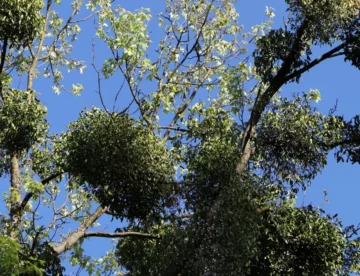
Winter is here, and as the leaves tontinue to fall from your trees here in our region of West Texas, you will notice clusters of green mistletoe clinging to the bare branches. While mistletoe may have a festive reputation, it’s actually a harmful plant that can weaken your trees if left untreated. At Thornton’s Tree Service, we’re here to help you keep your trees healthy and thriving through the colder months.
Why it Mistletoe a Problem?
Mistletoe is more than just a holiday decoration. It’s a hemiparasitic plant that attaches itself to the branches of trees, drawing water and nutrients away from its host. Over time, this will weaken your tree, making it more susceptible to disease, pests, and structural issues. Without intervention, mistletoe can spread and cause significant damage, especially in trees already stressed by drought or other environmental factors.
Can You Safely Remove Mistletoe?
When it comes to mistletoe removal, the goal is to eliminate the plant without harming your tree. You do need to be a little careful as it is somewhat toxic if ingested in large amounts, so make sure you remove all traces of it from the ground to keep your pets from playing with it. Here’s how we handle it:
- Remove Smaller Branches Entirely
- If mistletoe is growing on smaller branches, the best approach is to prune the branch entirely. This ensures the parasite is completely removed and prevents regrowth. Always cut at the branch collar to promote proper healing.
- Nip It Off Larger Branches
- For those larger branches where full removal isn’t an option, the mistletoe can be carefully cut off. However, this it is really just a temporary solution, as mistletoe often regrows. Regular monitoring and repeated removal may be necessary.
Is there a Chemical I Can Use to Kill Mistletoe?
Our ISA certified arborist Riley Holt says, unfortunately, there’s no spray or chemical treatment that will kill mistletoe without also harming your tree. This makes professional removal the safest and most effective option.
The Importance of Professional Tree Care
While mistletoe removal might seem straightforward, improper pruning can damage your tree and make it vulnerable to other problems. Our team at Thornton’s Tree Service has the expertise to safely and effectively remove mistletoe while preserving the health of your trees.
Schedule Your Winter Tree Care Today
Winter is the perfect time to address mistletoe and other tree care needs. With the foliage gone, it’s easier to spot and treat issues before they become major problems. Contact Thornton’s Tree Service today to schedule a free on-site consultation, and let us help you keep your trees healthy and beautiful all year long.

As temperatures in Texas start to dip now in November, it’s time to prepare your trees for the winter months ahead. Caring for trees during the fall helps ensure they remain healthy, resilient, and ready to thrive in the spring. Here are some essential tree care tips for Texas homeowners to follow in November.
Inspect Your Trees for Damage
Before the winter sets in, inspect your trees for signs of damage, disease, or structural issues. Look for:
– Cracks or splits in the trunk
– Dead or broken branches
– Signs of pests or disease, such as cankers, unusual bark discoloration, or fungal growth
Early detection allows you to address problems before they worsen, giving your trees a better chance of surviving the winter months.
Prune Strategically
Fall and early winter are excellent times to give us a call to prune your Texas trees, as the cooler weather reduces the risk of disease spread. Trim dead or weakened branches to prevent breakage from winter winds or ice. However, avoid heavy pruning, which can stress the tree just as it’s entering dormancy. Instead, focus on removing dead wood and shaping branches that pose potential hazards.
Tip: For oak trees, November is generally a safe month for oak tree maintenance to prevent oak wilt spead.
Mulch for Moisture Retention and Temperature Control
Adding a layer of mulch around the base of your trees does provide insulation here in semi-arid west Texas, helping to regulate soil temperature. This layer also retains moisture, protecting the roots from Texas’s occasional winter dry spells. Use organic mulch, such as wood chips or pine bark, and spread it in a donut shape, keeping it 3-4 inches away from the trunk to avoid moisture buildup and rot.
Water Deeply Before the First Frost
Even though Texas has relatively mild winters, trees still benefit from a final deep watering before winter. This deep soak gives them enough moisture to stay hydrated throughout the colder months when rainfall is inconsistent. Make sure to water:
– Young trees, which are more susceptible to drought stress
– Mature trees if there’s been little rainfall in the weeks leading up to the first frost
Water slowly and deeply, focusing on the area under the tree’s drip line (the outer edge of its canopy).
Fertilize Sparingly
Texas trees don’t need heavy fertilization in November, but a light application can be beneficial for certain trees to provide essential nutrients before dormancy. Use a slow-release, balanced fertilizer designed for trees. Avoid fertilizing late in the month, as it can stimulate new growth that won’t have time to harden off before winter.
Protect Young Trees
Newly planted trees are more vulnerable to temperature fluctuations and potential frost damage. For young or sensitive species, consider using tree wraps or burlap to insulate them on cold nights. Be sure to remove the wrap in the morning to prevent moisture buildup. You may also add stakes to provide support against strong winds.
Watch for Fall Pests
In Texas, certain pests may still be active into late fall, especially in warmer regions. Keep an eye out for:
– Aphids, which can cause leaf curling and distortion
– Bagworms, which create silk bags that damage foliage
– Scale insects, which appear as small bumps on branches
Plan Ahead for Winter Storms
While Texas isn’t known for heavy snowfall, winter storms can still impact your trees. Trim vulnerable branches and clear any deadwood that could break and damage property. For larger trees, it may be worth consulting our professional arborist to assess the stability and health of the tree. Remember what happened in February 2021?
Avoid Unnecessary Stress
Trees in November are preparing to go dormant, so avoid any activities that may stress them, such as unnecessary pruning or major root disruption. Allow your trees to rest and conserve their energy for spring.
November is a crucial month for Texas tree care, providing an opportunity to prepare your trees for the upcoming winter. By following these tips, you can help ensure your trees remain healthy, resilient, and ready to thrive when spring arrives. If you’re unsure about specific tree care practices, reach out to us here at Thornton’s Tree Serive to ensure your trees receive the best possible care throughout the season.
Preparing your trees now means a healthier landscape for the new year!
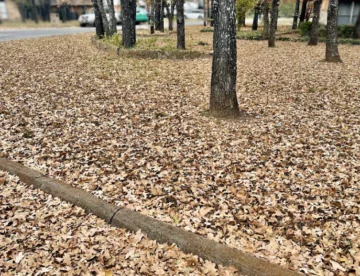
While temperatures continue to cool as we head into fall, it’s a great time to prepare trees for winter on your property.
Here at Thornton’s Tree Service we offer pruning services, especially for dead, damaged, or overgrown branches. Pruning helps prepare trees for winter storms, preventing breakage and damage. We still see a lot of trees in the Abilene area that are in desperate need of trimming of damage left over from the Big Freeze of February 2021 with dead branches literally just dropping off trees and damaging property.
Tree Health Inspections
As trees begin to prepare for dormancy, it’s a good time to offer health inspections. If you are concerned our Arborist Riley Holt can come out to your property to do an assessment. This pre-emptive visit can help to address potential diseases, pest infestations, or weak branches before they become major problems.
Prepare Trees for Winter Along With Fall Cleanup and Leaf Removal
While we do have a lot of live oaks in the region that shed their leaves in the spring, from March to May, we do have many trees shed leaves in the fall, making cleanup a common need. Check the trees on your property, do you have dead branches that would pose a threat to property if they were to come crashing down unexpectedly? Along with tree trimming and removal we can do yard cleanup along with shrub and tree trimming to help maintain your lawns and prevent blocked gutters or drains.
Storm Damage Prevention
September is often the calm before winter storms hit. Ice storms are a real threat here in west Texas. Thornton’s Tree Service can offer storm preparation, including removing weak limbs or vulnerable trees that could cause damage to homes or property.
Stump Grinding and Tree Removal
We specialize in these services for homeowners who want to clean up their yards before winter or need to address tree hazards before snow and ice come. One of the main advantages of using a professional stump grinder is that it effectively prevents the stump from regrowing. Without grinding, the stump may sprout new growth, leading to additional maintenance over time. Grinding eliminates the root system’s ability to regenerate, ensuring the tree won’t come back. Not only that, but removing a stump through grinding improves the visual appeal of your yard.
Emergency Tree Services
Just a reminder that we are available for emergency services 24/7. We know that tree emergencies don’t always happen during regular business hours Monday thorugh Friday. That’s why our emergency response team is on standby 24 hours a day, 7 days a week, ready to tackle any tree-related problem at any time. Whether it’s late at night, over the weekend, or during a holiday, you can count on us to be there when you need us most.
We look forward to helping Abilene area homeowners prepare for the months ahead.
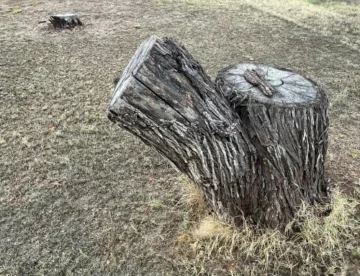
If you’ve recently had a tree removed, or you’ve just been left with an unsightly stump in your yard after a previous removal years ago, consider getting the stump removed by a professional tree service crew.
While it might seem harmless, ignoring that stump can lead to a range of problems over time.
Whether you’re a homeowner looking to improve your landscape or a property manager focused on maintaining a clean and safe environment, stump grinding and removal offer several important benefits.
Enhances Visual Appeal
A leftover stump can be an eyesore, disrupting the beauty of your landscape. By grinding down or removing the stump, you restore the seamless flow of your lawn or garden. Removing the stump will also improve your curb appeal and create a more inviting outdoor space.
Prevents Pest Infestation
Tree stumps can attract pests such as termites, ants, and beetles. These insects often nest in and around the decaying wood, potentially spreading to healthy trees or even your home. Stump grinding and removal eliminate this risk, helping protect your property from unwanted infestations.
Improves Safety
A tree stump in your yard can be a tripping hazard, especially for children, the elderly, or anyone not paying close attention. It can also be a dangerous obstacle when mowing the lawn or during other yard work. Removing the stump reduces the risk of accidents, keeping your outdoor space safer for everyone.
Prevents Regrowth
Some tree stumps can sprout new growth, leading to the development of unsightly and unwanted shoots. These shoots can drain nutrients from the soil, affecting the health of nearby plants and requiring ongoing maintenance. Stump grinding and removal ensure that the tree won’t regrow, saving you time and effort.
Can Increase Property Value
A well-maintained landscape adds value to your property. Potential buyers are more likely to be impressed by a yard that is free of stumps and hazards. This will make your home more attractive in the current buyer’s market. Investing in stump grinding and removal is an investment in the long-term value of your property.
Stump grinding and removal are essential services for anyone looking to maintain a safe, beautiful, and pest-free landscape. By choosing to address those leftover stumps, you’re not only enhancing the appearance of your property but also protecting it from potential issues in the future.
If you have a stump that needs attention, don’t wait – contact Thornton’s Tree Service in Abilene today to explore your options and enjoy the benefits of a great looking yard!
